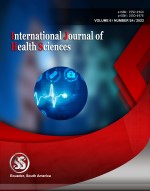Hybrid artificial neural network algorithm for air pollution estimation
Keywords:
Air Quality Estimation, Hybrid Model, Artificial Neural Network, Pollutants, Linear Vector QuantizationAbstract
In recent years, airborne broadcasting has grown more prevalent in cities. Air quality degradation is a severe air pollution issue that exists daily. To forecast the amount of pollutants, Artificial Neural Network (ANN) and Linear Vector Quantization (LVQ) techniques were utilized. The data set dimensions are defined by the pre-processing procedure and the feature extraction mechanism. The ANN model predicts categorization concentration, allowing the LVQ model to classify direct situations with greater accuracy using explanatory factors. The ANN+LVQ model outperformed other technologies in terms of classification accuracy. The raw data was cleaned to improve the accuracy of the prediction algorithms. The pollutants discovered in the collection are NO2, NOx, O3, Benzene, Xylene, NH3, CO, SO2, PM10, NO, and Toluene. The performance of the recommendation and forecast models were tested in this study using two datasets in two distinct experiments. In urban, rural, and industrial settings, the proposed ANN model is successful in detecting air quality and predicting pollution levels. The ANN-LVQ model obtained 90% percent sensitivity, 97.59% accuracy, and 99.46% specificity with 2.43% error rate. The suggested model's accuracy is much greater than that of other current research models.
Downloads
References
F. Bre, J. M. Gimenez, and V. D. Fachinotti, “Prediction of wind pressure coefficients on building surfaces using artificial neural networks,” Energy Build., 2018, doi: 10.1016/j.enbuild.2017.11.045.
N. H. A. Rahman, M. H. Lee, M. T. Latif, and Suhartono, “Forecasting of air pollution index with artificial neural network,” J. Teknol. (Sciences Eng., 2013, doi: 10.11113/jt.v63.1913.
A. Azid, H. Juahir, M. T. Latif, S. M. Zain, and M. R. Osman, “Feed-Forward Artificial Neural Network Model for Air Pollutant Index Prediction in the Southern Region of Peninsular Malaysia,” J. Environ. Prot. (Irvine,. Calif)., vol. 04, no. 12, pp. 1–10, 2013, doi: 10.4236/jep.2013.412a1001.
“Vapnik, V. (2013). "Introduction to Artificial Neural Network Theory", The nature of statistical learning
A. Alimissis, K. Philippopoulos, C. G. Tzanis, and D. Deligiorgi, “Spatial estimation of urban air pollution with the use of artificial neural network models,” Atmos. Environ., vol. 191, pp. 205–213, 2018, doi: 10.1016/j.atmosenv.2018.07.058.
P. A. Rahman, A. A. Panchenko, and A. M. Safarov, “Using neural networks for prediction of air pollution index in industrial city,” 2017, doi: 10.1088/1755- 1315/87/4/042016.
A. Challoner, F. Pilla, L. Gill, G. Adamkiewicz, and M. P. Fabian, “Prediction of Indoor Air Exposure from Outdoor Air Quality Using an Artificial Neural Network Model for Inner City Commercial Buildings,” mdpi.com, 2015, doi: 10.3390/ijerph121214975.
Chauhan, R., Kaur, H., & Alankar, B. (2021). Air quality forecast using convolutional neural network for sustainable development in urban environments. Sustainable Cities and Society, 75, 103239.
Wang, J., Li, J., Wang, X., Wang, J., & Huang, M. (2021). Air quality prediction using CT-LSTM. Neural Computing and Applications, 33(10), 4779-4792.
Wardana, I. N. K., Gardner, J. W., & Fahmy, S. A. (2021). Optimising deep learning at the edge for accurate hourly air quality prediction. Sensors, 21(4), 1064.
Zhang, Y., Zhang, R., Ma, Q., Wang, Y., Wang, Q., Huang, Z., & Huang, L. (2020). A feature selection and multi-model fusion-based approach of predicting air quality. ISA transactions, 100, 210-220.
Sharma, A., Mitra, A., Sharma, S., & Roy, S. (2018, October). Estimation of air quality index from seasonal trends using deep neural network. In International Conference on Artificial Neural Networks (pp. 511-521). Springer, Cham.
Zhou, Y., Chang, F. J., Chang, L. C., Kao, I. F., & Wang, Y. S. (2019). Explore a deep learning multi-output neural network for regional multi-step-ahead air quality forecasts. Journal of cleaner production, 209, 134-145.
Nawahda, A., & Zhong, J. Classification with Quantification for Air Quality Monitoring.
Bai, L., Wang, J., Ma, X., & Lu, H. (2018). Air pollution forecasts: An overview. International journal of environmental research and public health, 15(4), 780.
Published
How to Cite
Issue
Section
Copyright (c) 2022 International journal of health sciences

This work is licensed under a Creative Commons Attribution-NonCommercial-NoDerivatives 4.0 International License.
Articles published in the International Journal of Health Sciences (IJHS) are available under Creative Commons Attribution Non-Commercial No Derivatives Licence (CC BY-NC-ND 4.0). Authors retain copyright in their work and grant IJHS right of first publication under CC BY-NC-ND 4.0. Users have the right to read, download, copy, distribute, print, search, or link to the full texts of articles in this journal, and to use them for any other lawful purpose.
Articles published in IJHS can be copied, communicated and shared in their published form for non-commercial purposes provided full attribution is given to the author and the journal. Authors are able to enter into separate, additional contractual arrangements for the non-exclusive distribution of the journal's published version of the work (e.g., post it to an institutional repository or publish it in a book), with an acknowledgment of its initial publication in this journal.
This copyright notice applies to articles published in IJHS volumes 4 onwards. Please read about the copyright notices for previous volumes under Journal History.
















